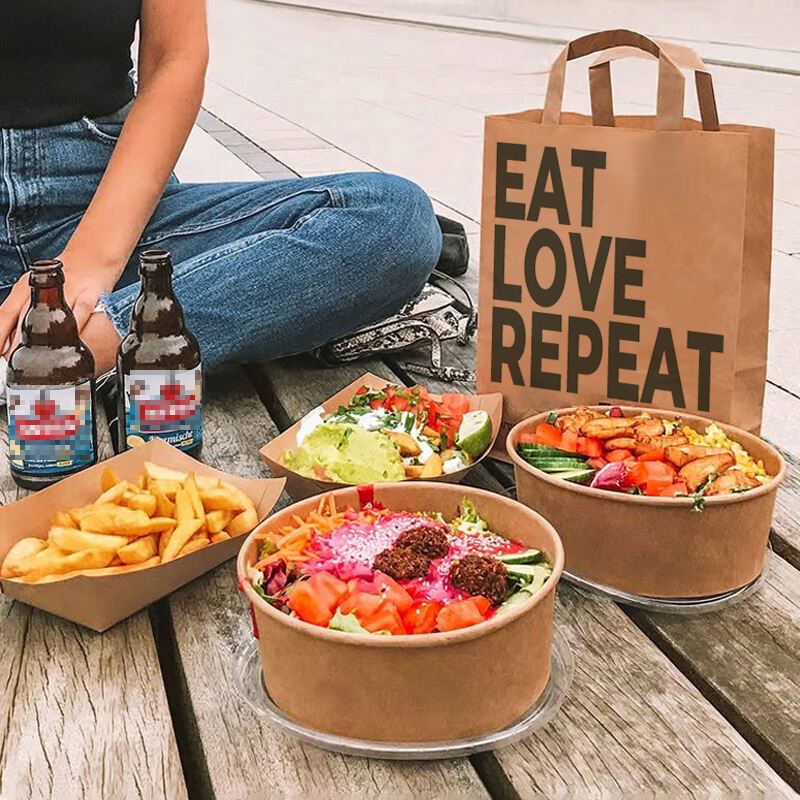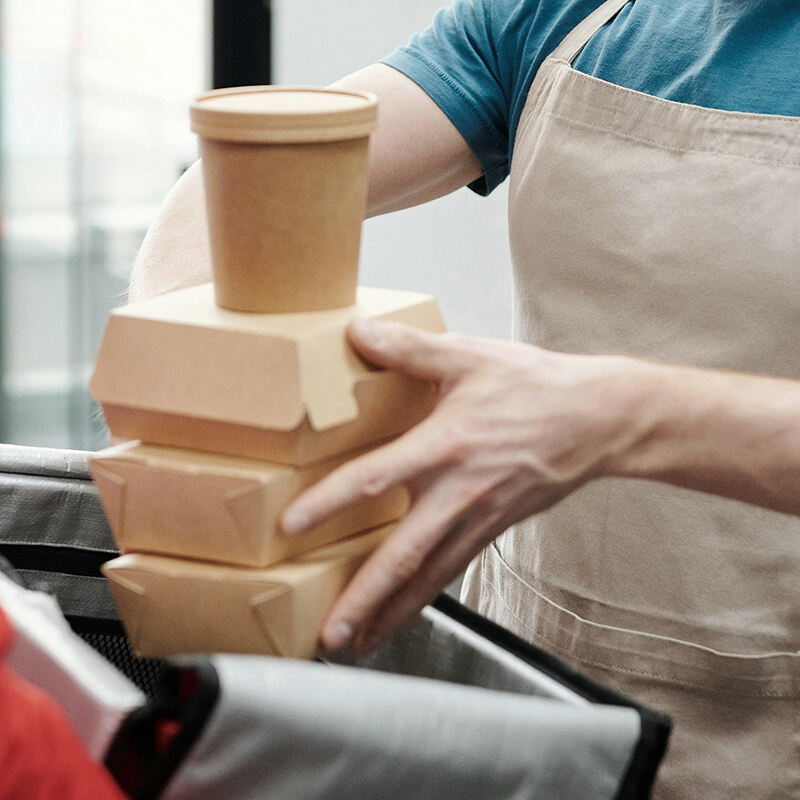Enhancing the Food Delivery Experience with Smart Packaging
In a fast-paced food service industry where convenience is key, the importance of Takeaway Packaging has grown exponentially. The rise of food delivery platforms, mobile ordering, and takeaway culture has transformed packaging from a secondary consideration into a central component of brand value, food quality, and customer satisfaction. Takeaway Packaging now plays a vital role in maintaining food freshness, preventing contamination, and ensuring food arrives in excellent condition regardless of distance or delay. Businesses must now carefully select materials, designs, and technologies that not only preserve flavor and texture but also reflect environmental consciousness and brand professionalism.
Preserving Food Freshness Through Packaging Design
Controlling Temperature and Moisture Retention
Takeaway Packaging must be designed to protect food from temperature fluctuations and humidity loss, both of which are primary contributors to reduced freshness. Materials like insulated cardboard, aluminum foil linings, or expanded polystyrene help maintain heat for hot foods, while vented containers allow steam to escape, preventing sogginess. For cold foods, like salads or sushi, plastic containers with tight seals keep moisture in and heat out, preserving taste and texture. The right combination of materials and closures helps ensure the food remains as fresh as when it left the kitchen. This temperature control is especially crucial for long-distance deliveries where the quality could otherwise be compromised.
Preventing Cross-Contamination and Spillage
Modern Takeaway Packaging also functions as a barrier against contamination. Sealed containers prevent foreign particles or odors from entering and mixing with the food during transport. Multiple compartments within a single container can separate sauces, proteins, and sides, ensuring distinct flavors and visual appeal are preserved. Spill-proof lids and leak-resistant materials help reduce messes and waste while boosting customer trust in the service. This level of food integrity is vital in maintaining hygiene standards and customer satisfaction, especially as consumers become more health-conscious and demanding about how their meals are handled.

Ensuring Safe and Efficient Transport
Strength and Stackability of Packaging
Transporting food efficiently requires packaging that is durable, stackable, and compact. Weak containers that bend or leak during delivery can damage food and ruin the dining experience. Takeaway Packaging made from rigid paperboard, PET plastic, or eco-friendly molded fiber can withstand stacking pressure and minor handling shocks. Furthermore, stackable designs maximize space in delivery bags and boxes, reducing the chance of food displacement and ensuring timely, damage-free delivery. Couriers benefit from ease of packing, while customers receive meals that look and taste as intended.
Adapting to Different Food Types and Delivery Conditions
Different food types require different packaging strategies. Soups and curries need airtight, microwave-safe containers; sandwiches and wraps benefit from breathable wraps to avoid sogginess. Takeaway Packaging must be tailored not only to food type but also to delivery method—whether it’s motorcycle courier, car, or bike. Weatherproof and heat-resistant materials are essential in cold or rainy climates, while ventilated packaging is critical in hot, humid conditions. This adaptability ensures consistency in food quality regardless of where or how the meal is delivered, giving businesses a competitive advantage through reliability.
Influencing Customer Perception and Brand Loyalty
Enhancing Unboxing and Dining Experience
Takeaway Packaging is often the first physical contact customers have with a food brand, especially in delivery. An attractive, clean, and well-constructed package makes a strong first impression and elevates the perceived value of the meal. Branded designs, thoughtful interior layout, and eco-friendly labeling help customers associate the packaging with professionalism and care. Moreover, packaging that’s easy to open and convenient to eat from improves the overall dining experience. In a market where presentation is increasingly shared via social media, good packaging can directly contribute to word-of-mouth marketing and customer loyalty.
Promoting Hygiene and Food Safety Expectations
In a post-pandemic world, consumers are more sensitive than ever to hygiene and safety. Tamper-evident seals, secure lids, and touch-free designs have become expectations rather than optional upgrades. Takeaway Packaging now carries the additional responsibility of assuring customers that their food was handled safely. Simple design elements like stickers, seals, or instruction labels can reinforce this perception. A single oversight—like a loosely closed container—can damage a brand’s reputation. Businesses that prioritize these details signal a clear commitment to food safety, which is essential to building trust with both new and returning customers.
Aligning with Environmental and Regulatory Expectations
Choosing Recyclable and Compostable Materials
As environmental awareness increases, the materials used in Takeaway Packaging must align with consumer values and local regulations. Recyclable plastics, compostable paperboard, and biodegradable fiber materials are increasingly becoming the norm. Many customers prefer to order from brands that use packaging that reflects environmental responsibility. Choosing materials that break down naturally or can be reused reduces the environmental impact of single-use containers. Additionally, it helps businesses meet government regulations on packaging waste, especially in cities with strict zero-waste or plastic-ban policies. This alignment is not just good for the planet—it’s good for business, too.
Meeting Local Food Safety and Packaging Regulations
Different regions have specific rules around food-grade packaging, labeling, and allergen warnings. Non-compliance can lead to fines, recalls, or even closures. Therefore, Takeaway Packaging must meet both national and local safety standards, from temperature thresholds to ink safety for food contact. Businesses that operate across multiple regions must adapt quickly to changing laws and consumer expectations. Including nutritional information, use-by dates, and recycling instructions on the packaging can also enhance transparency and compliance. Regulatory alignment ensures business continuity and strengthens the company’s credibility among both regulators and consumers.
Leveraging Technology in Takeaway Packaging
Integrating Smart Labels and Tracking Features
Smart packaging is a growing trend in the food industry, using technologies like QR codes, NFC chips, or temperature indicators to provide added functionality. QR codes printed on Takeaway Packaging can direct customers to menus, loyalty programs, or recycling instructions. Temperature-sensitive labels can show whether food has been kept within a safe range during delivery. These innovations not only enhance customer engagement but also add a layer of accountability and transparency. Such interactive elements are especially valuable for premium brands looking to differentiate their offerings and deliver a modern, tech-savvy experience.
Streamlining Operations with Standardized Designs
From a logistical standpoint, standardized packaging improves inventory management, speeds up kitchen operations, and simplifies delivery handling. Using uniform Takeaway Packaging shapes and sizes allows staff to pack quickly and consistently, reducing delays and errors. It also improves fit in delivery bags or stacking crates, which helps prevent movement and damage during transit. Standardization doesn’t mean compromising on brand personality—custom-printed materials or color-coded containers can still reflect identity while offering operational efficiency. Ultimately, streamlined packaging enhances both speed and accuracy, which are critical in high-volume or peak-hour operations.
Addressing Packaging Challenges in Delivery Systems
Managing Condensation and Food Texture
Condensation is one of the most persistent challenges in Takeaway Packaging. Trapped steam can make fries soggy or ruin the crust of baked goods. The solution lies in smart venting systems or absorbent liners that allow moisture to escape without sacrificing temperature. Perforated lids or breathable materials work well for fried or baked items, while absorbent pads help with juicy dishes like grilled meats or stir-fries. Finding this balance is critical to ensuring food maintains the texture customers expect, which directly influences their satisfaction and likelihood to reorder.
Avoiding Excess Packaging and Overdesign
While well-constructed Takeaway Packaging is essential, over-packaging can be counterproductive. Too many layers, plastics, or unnecessary inserts not only increase costs but can frustrate eco-conscious consumers. Excessive packaging can also slow down order preparation and add weight to deliveries, raising fuel costs and environmental impact. Efficient packaging uses only what’s needed to protect and present the food. Minimalist, functional designs are increasingly favored by both businesses and consumers, combining sustainability, efficiency, and convenience into a balanced and thoughtful solution.
FAQ
What materials are best for maintaining food freshness in takeaway packaging?
Insulated paper, aluminum-lined containers, and vented plastic lids work best for keeping food hot and fresh while preventing sogginess and condensation.
How does takeaway packaging impact delivery time?
Efficient, stackable packaging can speed up order preparation and make transportation smoother, which leads to faster and more accurate deliveries.
Is eco-friendly takeaway packaging as durable as traditional options?
Yes, many compostable or recyclable materials are now designed to match or exceed the strength and insulation of conventional packaging options.
Why is tamper-evident packaging important for takeaway food?
It assures customers that their food has not been tampered with during delivery, boosting trust and improving the overall sense of food safety.
Table of Contents
- Enhancing the Food Delivery Experience with Smart Packaging
- Preserving Food Freshness Through Packaging Design
- Ensuring Safe and Efficient Transport
- Influencing Customer Perception and Brand Loyalty
- Aligning with Environmental and Regulatory Expectations
- Leveraging Technology in Takeaway Packaging
- Addressing Packaging Challenges in Delivery Systems
- FAQ
